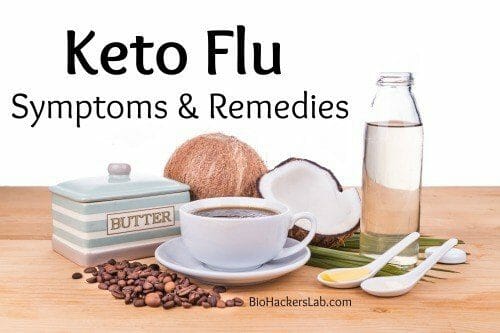
Keto flu can be a common side-effect most people experience when starting a low-carb high fat diet.
When the keto flu starts it can range in severity depending on factors shared below.
Find out what is keto flu, the common symptoms & causes, plus, how to get rid if it as quick as possible.
What is Keto Flu?
The keto flu is a short period of time when you may start to feel unwanted symptoms as your body starts becoming keto-adapted from the carb withdrawal response when starting a low-carb or ketogenic diet.
Keto-adaption is when you switch from using carbohydrates (glucose) as your preferred primary fuel source for energy & start converting across to using fat (ketones) for energy.
The keto flu is also commonly known as the:
- Ketogenic flu
- Ketosis flu
- Atkins flu
- Carb flu
- Induction flu
What Are The Symptoms of Keto Flu?
The common symptoms people experience who have keto flu are:
- Headaches
- Migraines
- Nausea (upset stomach)
- Diarrhea
- Constipation
- Muscle cramping, twitching or weakness
- Lightheadedness, or dizziness
- Brain fog, or a lack of mental clarity
- Drowsiness, fatigue or lethargy
- Strong feeling of craving sugar
How to Get Rid of Keto Flu?
- Step 1: Get Enough Essential Electrolytes & Minerals
- Step 2: Add More Salt to Your Food
- Step 3: Drink More Water
- Step 4: Eat More Fat
- Step 5: Eat More Low-Carb Vegetables
- Step 6: Drink Bone Broth
- Step 7: Do Some Light Exercise
- Step 8: Take Exogenous Ketones
- Step 9: Get A Good Night’s Sleep
- Step 10: Just Wait It Out
1. Get All Your Essential Minerals
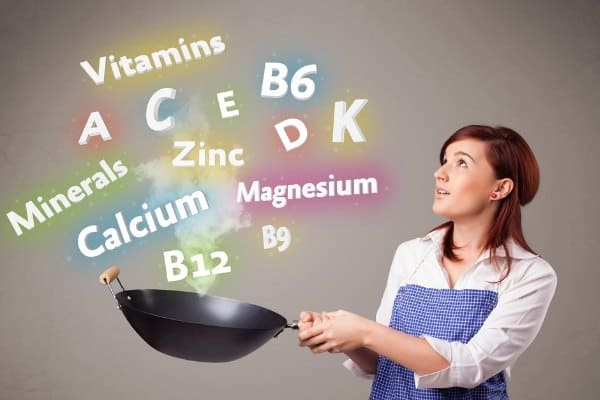
There are two types of minerals that your body needs to keep itself healthy and functioning properly.
Trace minerals are the first type. These are minerals that the body only needs a small amount of.
Macro-minerals are the second type. These are minerals that your body needs a larger amount of.
There are six essential minerals:
- Calcium
- Chloride
- Magnesium (300mg/day) – try Magnesium L-Threonate & Glycinate supplementother Magnesium supplements for this.
- Phosphorus
- Potassium (1g/day) – try Potassium Chloride supplement other Potassium supplements for this.
- Sodium (5g/day) – try Redmond Real Salt for this.
When you switch from a high-carb diet to a low-carb diet, you could be lowering the amounts of each of these essential minerals you are getting, resulting in a possible deficiency.
You can combat these deficiencies by eating specific foods, taking the best ketogenic supplements, or good multivitamins that have these minerals in them.
Heads up, do your research first since not all types of food that are rich in these nutrients are keto-friendly diet food.
2. Add More Salt to Your Food
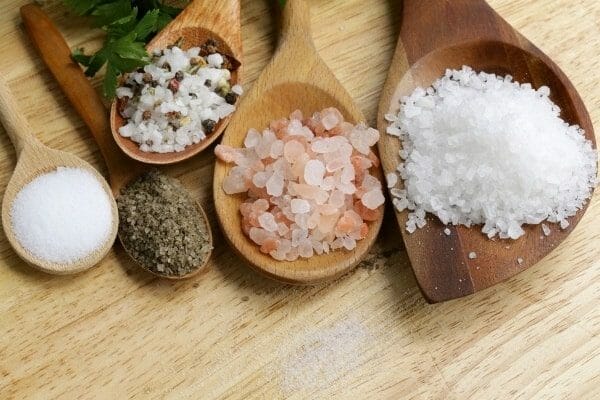
One of the biggest myths in dieting is that you don’t need to add more salt (sodium). Restricting salt on your food to lower the risk of hypertension (high blood pressure) is also a common myth that, thankfully, Dr DiNicolantonio busted big time in his The Salt Fix book on Amazon (Listen to Dr DiNicolantonio’s interview here).
One thing that tends to happen when you go “low-carb” is that your insulin levels will drop. This drop in your insulin levels means that your body doesn’t hold onto as much sodium as it did before, because the kidneys are excreting it at a faster rate than it used to before. What this means is that you need to get more good salt in your diet since your body is processing it so fast.
When your sodium is low, your body releases potassium from the muscles to make up for the low levels of sodium. This release of potassium isn’t good for your muscles and can make your potassium levels drop. Adding a little salt to your food can help keep your sodium and potassium levels up, which will help combat common symptoms.
Most people recommend drinking one to two cups of bouillon or broth a day. I love adding my favourite natural sea salt Redmond Real Salt to water and sprinkling it over my food.
3. Drink More Water

When you have any kind of flu or sickness, it is important to stay hydrated and make sure you have plenty of fluids. It is no different with keto flu. When you are on a ketogenic diet, your body is also excreting water faster than it was before you started dieting. Therefore, you must drink plenty of water to replenish your fluid levels and prevent dehydration, which can make the flu worse.
Keeping yourself hydrated will help alleviate the headaches that commonly accompany induction flu and boost your energy levels. Drinking water will also contribute to keeping your sodium and potassium levels in balance. Sports drinks that have electrolytes in them are also acceptable.
A simple way to tell if you are getting enough fluids is to check the color of your urine. If it is a pale yellow, like the color of lemonade, or a clear color, you are likely well-hydrated. But if it is a darker color, like the color of apple juice, then you may need to drink some water.
4. Eat More Fat (More Calories)

Because being on a ketogenic diet means that your body is no longer using sugars and carbohydrates as fuel sources, it needs to use the fats you ingest to give it energy. Increasing your fat consumption will also speed up your body’s transition process of changing its fuel source from carbs to fat.
Here is a list of healthy fats you can eat:
One of the problems that people on ketogenic diets come across is that they cut carbohydrates out of their diet but then don’t make up for that loss in caloric intake with the other foods they are eating.
If you are feeling sluggish and hungry, simply increase the amount of food you consume so you can make up for the caloric loss that comes from cutting carbohydrates.
5. Eat More Low-Carb Vegetables
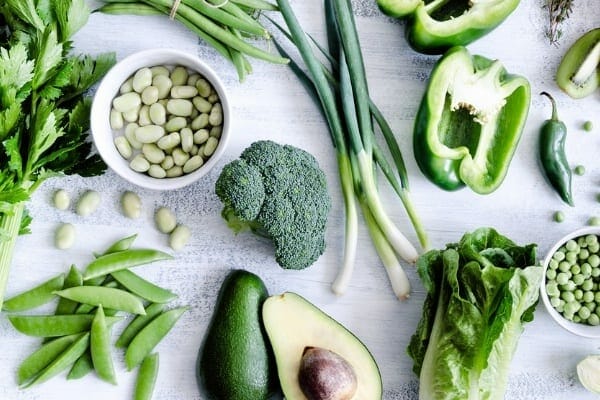
You’re probably thinking, “hold on, isn’t ketogenic dieting about giving up carbs?” The answer is yes, but the carbs you should be giving up are the ones that are unhealthy for you – usually those found in processed foods. There are, however, “clean” carbs that are good for you, such as the carbs that come from fruits and vegetables.
These carbs are good for relieving your symptoms during the transition period. You can slowly reduce the amount of “clean” carbs that you consume with each meal until they make up only about five percent of your diet each day – this is when you can enter ketosis.
6. Drink Bone Broth

Drinking a good bone broth can help provide your body with much needed essential amino acids.
These amino acids (like arginine, glutamine, and cysteine) can help assist your body’s natural immunity, boost your mood through your gut microbiome and help you rehydrate better than just drinking water due to the electrolytes found in bone broths. (ref)
7. Do Some Light Exercise
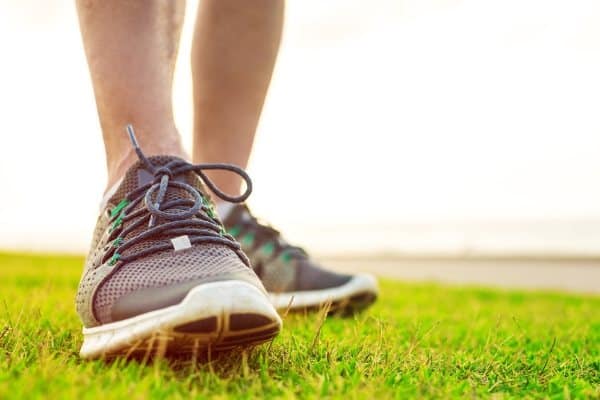
When you’re sick, exercising is the last thing you want to think about. One research study such suggested that regular physical activity improves your metabolic flexibility, which is your body’s ability to switch back and forth between using carbs and fats as its energy source. (ref)
For a more in-depth explanation of metabolic flexibility causing low carb flu I’d recommend Gnoll’s blog on it.
Getting into the habit of exercising every day will make the transition period easier and not last as long because your body will be able to quickly switch from burning carbs to burning fat when carbs become unavailable or the intake of carbohydrates stops.
8. Take Exogenous Ketones

Taking exogenous ketones like ketone salts or the HVMN ketone esters is a new novel way to try get fast relief from keto flu symptoms.
Since your body is try to adapt to running on ketones as a primary fuel source you can take a good ketone salt or ketone ester drink to help boost your blood ketone levels of beta-hydroxybutrate. Also the ketone salt drinks contain electrolytes that could help too.
9. Get A Good Night’s Sleep

Recovery is vital to performance and getting good quality sleep is the best form of recovery for our bodies.
When your making your body’s’ energy metabolism work harder during the keto-adaptation phase making sure you are not staying up too late and disrupting your sleep is a simple remedy to do. Lack of sleep can make your stress hormone, cortisol, go up which can make you feel stressed out and make your keto-adaption symptoms worse. (ref)
10. Just Wait It Out

In most cases, keto flu only lasts for a few days to a week max, but in rare occasions, it can stick around for more than two weeks. Don’t become discouraged by this, and don’t stop your diet. A lot of people fall prey to the thought, “if giving carbs up is making me sick, I must need them to stay healthy.”
In fact, carb flu is one of the main reasons people abandon their diets. But this is a trick by your body; the number one thing you need to remember is that during carb flu, your body is going through carb withdrawal. The best way to get through it is just to stay strong and wait it out.
When Does Keto Flu Start?
Keto flu symptoms will start showing in some type way within 1-7 days after starting to cut carbs out of your diet.
How Long Does Keto Flu Last For?
Keto flu can last at least 2 weeks before all symptoms go away, but it can take several weeks to months for amateur or elite athletes before they see improved exercise performance according to research.
What Causes Low Carb Flu?
These are the two primary reasons for most people.
1. Electrolyte Imbalance
A sudden change in your diet can cause an electrolyte imbalance which can lead to symptoms of keto flu.
When you switch to a ketogenic diet, you are cutting out processed fortified foods in exchange for more organic, wholesome, real foods. This can lead to an electrolyte deficiency.
2. Keto-Adaptation Period
When you are going through keto-adaption this is a common cause of keto flu symptoms.
The easiest way to look at it is that you are trading one source of fuel (carbohydrates) for another (fat). During this adjustment period your body is learning how to use ketones vs glucose better. You can measure when your are in nutritional ketosis to help know when you are burning excess fat away & making more endogenous ketones. (N.B. very different to exogenous ketones as Dr Brianna Stubbs mentioned)